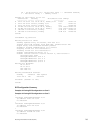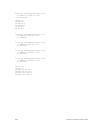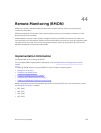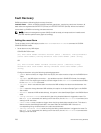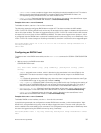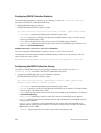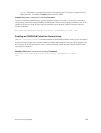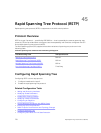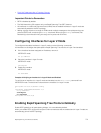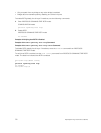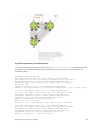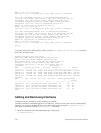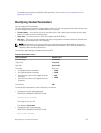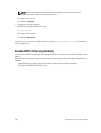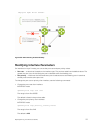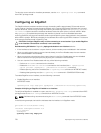
• Flush MAC Addresses after a Topology Change
Important Points to Remember
• RSTP is disabled by default.
• The Dell Networking OS supports only one Rapid Spanning Tree (RST) instance.
• All interfaces in virtual local area networks (VLANs) and all enabled interfaces in Layer 2 mode are
automatically added to the RST topology.
• Adding a group of ports to a range of VLANs sends multiple messages to the rapid spanning tree
protocol (RSTP) task, avoid using the range command. When using the range command, Dell
Networking recommends limiting the range to five ports and 40 VLANs.
Configuring Interfaces for Layer 2 Mode
To configure and enable interfaces in Layer 2 mode, use the following commands.
All interfaces on all bridges that participate in Rapid Spanning Tree must be in Layer 2 and enabled.
1. If the interface has been assigned an IP address, remove it.
INTERFACE mode
no ip address
2. Place the interface in Layer 2 mode.
INTERFACE mode
switchport
3. Enable the interface.
INTERFACE mode
no shutdown
Example of Verifying an Interface is in Layer 2 Mode and Enabled
To verify that an interface is in Layer 2 mode and enabled, use the show config command from
INTERFACE mode. The bold lines indicate that the interface is in Layer 2 mode.
Dell(conf-if-te-1/1)#show config
!
interface TenGigabitEthernet 1/1
no ip address
switchport
no shutdown
Dell(conf-if-te-1/1)#
Enabling Rapid Spanning Tree Protocol Globally
Enable RSTP globally on all participating bridges; it is not enabled by default.
When you enable RSTP, all physical and port-channel interfaces that are enabled and in Layer 2 mode are
automatically part of the RST topology.
Rapid Spanning Tree Protocol (RSTP)
771



